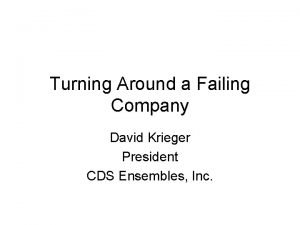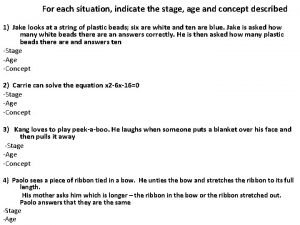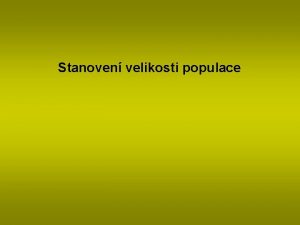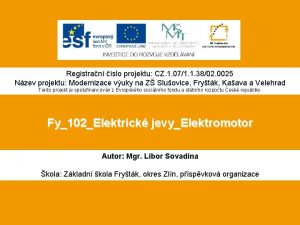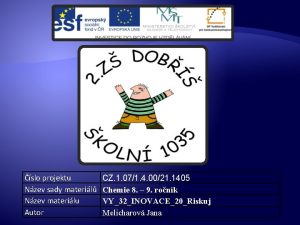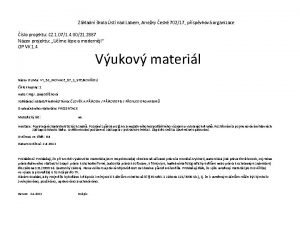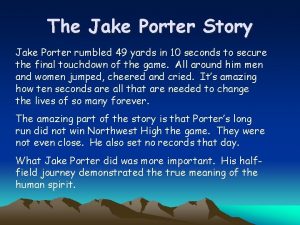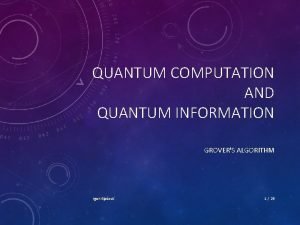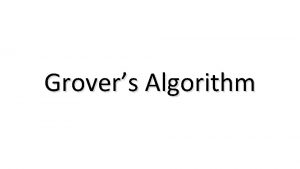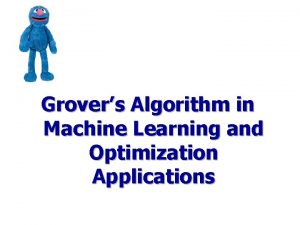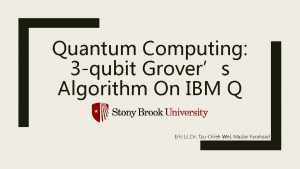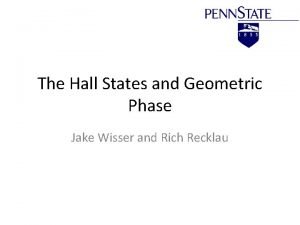h c r a e S Grovers Jake
















- Slides: 16

h c r a e S Grovers Jake Biamonte Should be “one in four search” Jacob D. Biamonte biamonte@ieee. org Portland Quantum Logic Group

Karnaugh Maps for quantum operations a=0 b=0 H X

Karnaugh Maps for quantum operations H a X X H b folding 1 1 1 1 -1 Hadamard 1 1 0 0 11 11 1 0 2 0 1 wire 0 0 10 1 0 01 0 1 = 10 -10 01 0 -1 1 0 0 0 10 1 0 01 0 1 10 -10 01 0 -1 1 1 1 = 1 1 0 0 1 1

Karnaugh Maps for quantum operations H a X b folding 1 1 0 NOT X H 1 1 0 0 11 11 1 0 2 0 1 wire 0 0 00 00 = 10 01 00 00 1 0 0 0 10 0 0 00 00 10 01 00 00 1 0 0 0 1 0 = 0 0 1 1 1 0 0 0 1 01 10 00 00 01 10 0 0 1 0 = 0 0 0 1

Karnaugh Maps for quantum operations H a X X H b mirroring folding 1 1 11 11 1 1 0 0 0 10 01 00 00 0 0 1 0 00 00 01 10 0 1 0 = 0 0 1 0 0 1 0 0

Why is this important? • This presentation shows clearly how to perform a so called 1 in 4 search • We start out with the basics 1 in 4 search

Pick your needle and I will find you a haystack The point of this slide is to show examples of 4 different oracles. Grovers search can tell between these oracles in a single iteration, classically we would need 3 iterations.

Properties of the oracle Let f : {0, 1}2 {0, 1} have the property that there is exactly one x {0, 1}2 for which f (x) = 1 Goal: find x {0, 1}2 for which f (x) = 1 Classically: 3 queries are necessary Quantumly: ? Only after 3 tests can we determine with certainty that the oracles is 1 for only a single input value x

A 1 -4 search can chose between 4 oracles in one iteration Black box for 1 -4 search: x 1 x 2 y f(x 1, x 2) Start by creating phases in superposition of all inputs to f: 0 0 1 H H H f Input state to query: ( 00 + 01 + 10 + 11 )( 0 – 1 ) Output state: ((– 1) f(00) 00 + (– 1) f(01) 01 + (– 1) f(10) 10 + (– 1) f(11) 11 )( 0 – 1 )

Time 0 0 1 state = 0 1 0 0 0 H H X X H H f H X X H H state = 0. 353 -0. 353 0. 353 state = -0. 353 -0. 353 state = 0 0 -0. 5 -0. 5 0 0 state = 0 0 -0. 5 0 0 0. 5 -0. 5 state = -0. 353 0. 353 -0. 353 H H M M H M state = 0 0 0 0 -1 state = 0 0 0 0 1 This slide illustrates how the state of the system is changed as it propagates through the quantum network implementation of Grovers Search algorithm.

Time 0 0 1 state = 0 1 0 0 0 ab c 00 01 11 10 01 1 H H X X H H f H X X H H state = 0. 353 -0. 353 ab c 01 0. 3 – 0, 3 00 01 0. 3 – 0, 3 10 0. 3 – 0, 3 state = 0. 353 -0. 353 ab c state = 0. 353 -0. 353 01 00 0. 3 – 0, 3 01 0. 3 – 0, 3 11 - 0. 3 0, 3 10 0. 3 – 0, 3 state = -0. 353 -0. 353 ab c 01 state = 0 0 -0. 5 -0. 5 0 0 state = 0 0 -0. 5 0 0 0. 5 -0. 5 ab c 01 00 0. 3 – 0, 3 00 - 0. 3 0, 3 01 0. 3 – 0, 3 11 - 0. 3 0, 3 11 0. 3 - 0, 3 10 0. 3 – 0, 3 state = -0. 353 -0. 353 ab c state = -0. 353 -0. 353 01 H H M M H M state = 0 0 0 0 -1 ab c state = 0 0 0 0 1 01 00 0 01 - 0. 5 0, 5 01 - 0. 5 11 0 0 11 0. 5 10 0. 5 – 0, 5 10 0 0 0, 5 - 0. 5 0

Time 0 0 1 state = 0 1 0 0 0 ab c 01 H H X X H H f H X X H H state = 0. 353 -0. 353 Ibverters flip between 00 and 11 ab c 01 00 0. 3 – 0, 3 00 - 0. 3 0, 3 01 0. 3 – 0, 3 11 - 0. 3 0, 3 11 0. 3 - 0, 3 10 0. 3 – 0, 3 state = 0. 353 -0. 353 0. 353 Hadamard addis in 00 and 11 ab c 01 state = -0. 353 -0. 353 state = 0 0 -0. 5 -0. 5 0 0 Inverter flips second bit when first is 1 ab c 01 00 0 01 - 0. 5 0, 5 01 - 0. 5 11 0 0 11 0. 5 10 0. 5 – 0, 5 10 0 0 0, 5 - 0. 5 0 state = -0. 353 -0. 353 state = 0 0 -0. 5 0 0 0. 5 -0. 5 01 00 -0. 3 01 0. 3 11 -0. 3 10 0. 3 -0. 3 M M H M state = 0 0 0 0 -1 state = -0. 353 -0. 353 Ibverters flip between 00 and 11 ab c H H ab c state = 0 0 0 0 1 Hadamard of affine function 01 00 - 0. 3 01 0. 3 - 0. 3 11 - 0. 3 10 0. 3 - 0. 3 ab c 00 01 11 10 01 -1

Time 0 0 1 H H f H H X X H H H M M H M ψ00 = – 00 + 01 + 10 + 11 ψ01 = + 00 – 01 + 10 + 11 ψ10 = + 00 + 01 – 10 + 11 ψ11 = + 00 + 01 + 10 – 11 The state corresponding to the input to the oracle that has a output result of 1 is ‘tagged’ with a negative 1. After Hadamard the solution is “known” in Hilbert space by having value -1. But it is hidded from us

Qu. IDDPro Script --- Density states • #grover 4. qp #biamonte@ieee. org # state = cb("001")*cb("001")' state = hadamard(3)*state*hadamard(3)' echo("define a needle in a haystack: ") ####### # Oracle 1 xi = (1, 1) # ---*--# | # --(+)-####### oracle = cu_gate(sigma_x(1), "c 1 c 2 x 3", 3); state = oracle*state*oracle' echo("apply CPS: ") state = kron(hadamard(2), identity(1))*state*kron(hadamard(2), identity(1))' state = kron(sigma_x(2), identity(1))*state*kron(sigma_x(2), identity(1))' state = cu_gate(hadamard(1), "x 2", 3)*state*cu_gate(hadamard(1), "x 2", 3)' state = cu_gate(sigma_x(1), "c 1 x 2", 3)*state*cu_gate(sigma_x(1), "c 1 x 2", 3)' state = cu_gate(hadamard(1), "x 2", 3)*state*cu_gate(hadamard(1), "x 2", 3)' state = kron(sigma_x(2), identity(1))*state*kron(sigma_x(2), identity(1))' state = hadamard(3)*state*hadamard(3

Qu. IDDPro Script --- State Vector state = cb("001") state = hadamard(3)*state echo("define a needle in a haystack: ") ####### # Oracle 1 xi = (1, 1) # ---*--# | # --(+)-####### oracle = cu_gate(sigma_x(1), "c 1 c 2 x 3", 3); state = oracle*state echo("apply CPS: ") state = kron(hadamard(2), identity(1))*state = kron(sigma_x(2), identity(1))*state = cu_gate(hadamard(1), "x 2", 3)*state = cu_gate(sigma_x(1), "c 1 x 2", 3)*state = cu_gate(hadamard(1), "x 2", 3)*state = kron(sigma_x(2), identity(1))*state = hadamard(3)*state

We found Grover!
 Jake krieger kildare
Jake krieger kildare Jake nichols pharmacist
Jake nichols pharmacist Main characters in the westing game
Main characters in the westing game Setting of jake story
Setting of jake story Jake looks at a string of plastic beads
Jake looks at a string of plastic beads David cowan md
David cowan md Gabbie ecg
Gabbie ecg Tacka ekvivalencije
Tacka ekvivalencije Virtualization architecture
Virtualization architecture Jake leicht reviews
Jake leicht reviews Jake henderson
Jake henderson Jaké metody používáme k odchytu vodních živočichů
Jaké metody používáme k odchytu vodních živočichů Jake jylan hall
Jake jylan hall K čemu slouží komutátor
K čemu slouží komutátor Jake reinvented quotes
Jake reinvented quotes Jaké oxidační číslo mají halogeny v halogenidech
Jaké oxidační číslo mají halogeny v halogenidech Jaké ústní ústrojí mají stejnokřídlí
Jaké ústní ústrojí mají stejnokřídlí
